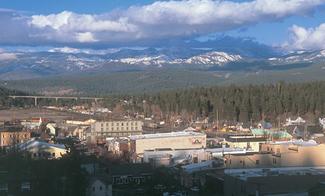
Reinventing the General Plan
A Project of the California Planning Roundtable
With support from the American Planning Association, California Chapter
Great Model: Town of Truckee
Featured Principles: Manage Change, Build Community Identity, Be Universally Attainable
- Context
- Creating Trust and Efficiency
- Defining Keys to Character
- Success in Implementation
- Challenges and Lessons
- Background Information
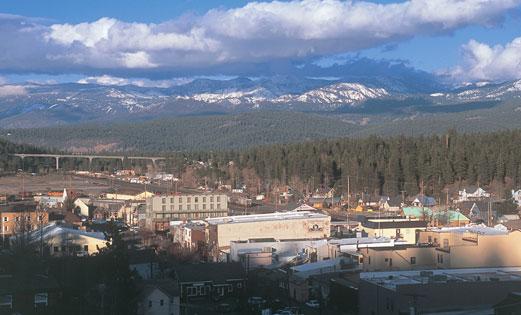
The environment—both natural and built—is the economy in Truckee. Truckee is blessed with vistas of the Sierra Crest, the Truckee River running through downtown, Donner Lake and seemingly endless and accessible open space thanks primarily to Truckee’s location in the middle of the Tahoe National Forest. The built environment includes a National Register Historic District, very few chain stores, no big boxes and plenty of “Truckee Funk” that makes the community unique.
Often identified as one of the top small towns in the United States for snow sports and mountain-related outdoor activities, the Town of Truckee has been experiencing rapid growth since the mid-1970s. In Truckee, growth has long been primarily fueled by tourism, which spins off development and construction accommodating affluent Bay Area and Sacramento residents seeking vacation property. Truckee’s attractiveness to this market is driven exclusively by the quality and uniqueness of its mountain environment. Although growth has created some economic prosperity, Truckee is challenged to plan for this vacation-based growth pressure while maintaining a real and viable community for residents that live and work here.
After decades of growth managed by Nevada County, from 50 miles and a mountain pass away in Nevada City, the town took control of its own future when it incorporated in 1993. Since then, good planning has been integral to Truckee's vitality.
The town's first General Plan, adopted in 1996, sought to establish Truckee as a recreation-based destination in addition to continuing to serve as the housing and service hub for the North Lake Tahoe resort region. The success of that effort and the superheated economy of the 2000s pushed Truckee to update the 1996 General Plan, beginning its second General Plan in just 13 years of incorporation.
The focus of this model is that second Town of Truckee General Plan, which was adopted in November 2006. The three-year effort created the policy framework to maintain Truckee’s outstanding environmental quality and small town character in the face of growth pressure.
Some of the great features of the 2006 Truckee General Plan include:
Clear Public Guidance Leads to Solid Mandate
Truckee was able to engage its whole community, including traditionally underserved populations, but also kept the whole planning process reasonably efficient in time and costs. It did this using an extensive and transparent process that established clear public directionon the major issues, followed by a second phase of strong leadership from the Planning Commission to complete the adoption of the General Plan within budget
Defining Community Character
In response to residents' concerns, the Town began the Plan by creating a Community Character Element that highlighted the qualities that Truckee residents most wanted to protect. This intersection of local vision and economic reality provided a solid foundation for a strong planning effort, and built trust between the community and planners that Truckee's most treasured characteristics would be protected and enhanced.
Extensive and Adaptable Implementation
To provide clear accountability and to specify the timing and responsibility of general plan implementation, the Town Council adopted a General Plan Implementation Program that provides guidance on how to implement the General Plan in the annual budget process, in the 5 year Capital Improvement Plan, through Circulation Improvements, and within the Town’s regulatory systems.
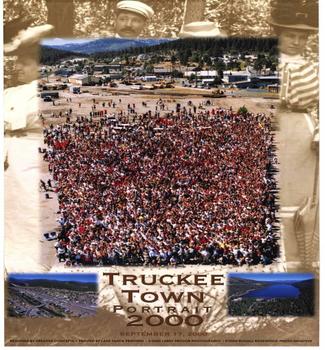
Working with its consultant, Truckee adopted a two-phase approach to updating its General Plan. The first phase was designed to inform the community and decision makers of key issues that would drive the update process. The Town desired to create a broad base of interest in the General Plan process and a level playing field for all participants. To create a common understanding of the important issues, the Town published the General Plan Briefing Book (see below), which was distributed widely. Following publication of the Briefing Book and in-depth presentations of its components, the Town initiated a community survey to provide an avenue for residents and second-home owners to provide input on important issues. The survey provided an important venue for busy people to participate in the process, and the results were presented at a community workshop.
In addition to the survey process, the Town conducted a series of 4 workshops, each attended by over 80 participants. The workshops were very productive, benefiting from strong community camaraderie and a genuine spirit of cooperation. They were designed to engage residents, the Planning Commission, and the Town Council in deciding the important issues to be addressed in the General Plan Update process. These workshops combined educational presentations with hands-on exercises.
This first phase involved over 1,000 Truckee residents through survey responses, stakeholder interviews and the workshop process. Not included in this total are residents and second home owners that didn’t fill out a survey or attend a workshop, but followed the process online, where all of the project information and materials were available, or who watched the workshop process on the local community access channel (all meetings were broadcast live).
In addition, special outreach efforts resulted in the first significant involvement of Truckee’s Hispanic community in a Town planning process. The Hispanic community constitutes 20 to 30% of the Town’s population. The Town found that traditional efforts to reach this community had been ineffective and decided to do a more expansive outreach. Town staff worked with trusted leaders in the Hispanic community, such as the priest of the local Catholic church and staff of the Family Resource Center to reach the community, which is largely composed of service workers in the area's hotels, ski resorts, and construction industries. The Town was able to reach this population in a much more meaningful way.
Additionally, though Spanish language interpreters were present at major public hearings, the public participation consultant also held smaller pre-meeting workshops with members of the Hispanic community. These workshops were led by Spanish-speaking planners with the consultant. The conversations allowed community members to speak comfortably and provide their input without having to rely on translations.
Overall, the first phase engendered meaningful community dialogue inside and outside of the structured process.
The outcome of the six-month Phase 1 process was a summary that was utilized to “scope” the work program for the General Plan update. The direction provided during this process informed the Town that there was strong community support for a “moderate” growth approach in the Update. However, some environmental and business groups continued to desire dramatically lower and higher levels of growth, respectively.
Seeking a process that would honor the effort and the direction of moderate planned growth that emerged from the Phase One process, the Town Council decided to have the Planning Commission serve as the General Plan Steering Committee during Phase 2 rather than developing a typical Steering Committee composed of stakeholders from many interest groups. The Town Council wanted to find an efficient way to continue to engage the public broadly as the plan moved forward.
To accomplish this, the Planning Commission functioned as the General Plan Steering Committee during Phase 2. Their role was to convene several major community workshops, and to keep the project on track and on schedule. There were no direct avenues into the process for “special” interests other than through the public workshops. The decision not to form a General Plan steering committee of stakeholders and special interests was controversial and criticized when the Phase 2 process was launched. However, Planning Commission members were already familiar with the planning process and the issues faced by the Town, as well as experienced in negotiating competing interests in the planning process. By having them guide the second phase, Truckee ensured the General Plan Update process remained focused on the work plan established in Phase 1 and was not tied down by special interests.
The benefit of Truckee’s two-phase General Plan update process can be summarized as follows:
- The process provided for maximum public involvement early in the formative stages of the General Plan update effort when there is the greatest flexibility in responding to public input.
- A vigorous Phase 1 process allows the development of a reliable budget and timeline for the General Plan update based upon a much more detailed understanding of the issues to be addressed and the process to be utilized to complete the effort.
- The outcome from the Phase 1 process can be published and widely distributed so that the public, stakeholders and special interests have a documented understanding of the breadth and process associated with the General Plan update. While deviations to these parameters are possible and appropriate, they are made in a deliberate and transparent way. This is important because a General Plan update can create significant political and economic uncertainty, which can be addressed in part through the understanding and transparency provided by this type of process.
- The Planning Commission was helpful as General Plan steering committee during Phase 2, because it meant that the Town benefitted from their existing experience with planning and the community's concerns, streamlining the process while also allowing for full consideration of public comments and ideas.
Download the Truckee Briefing Book (84 megabyte PDF)
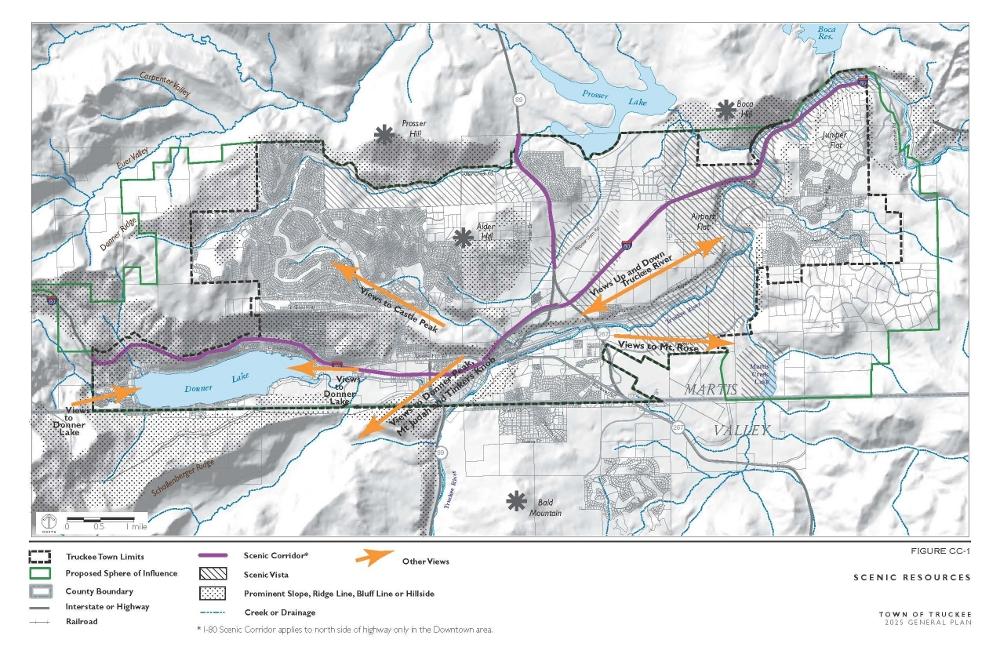
The initial phase of the General Plan effort documented that Truckee residents and stakeholders supported reasonable levels of growth and change, but were also concerned that growth could compromise the environmental quality and small town character of Truckee. The community's desires indicated that the General Plan needed to go beyond the traditional elements to explicitly define the elements of character that residents value, and to develop strategies to protect and enhance these resources. This direction resulted in the development of optional Community Character and Economic Development Elements, which work in concert with the 7 mandatory elements to address these important issues.
These “special” elements define the unique aspects of Truckee’s character, including the character of the natural and built environment but also important cultural and societal values. The Community Character Element seeks to define, protect and enhance the “sense of place” that is critical to the quality of life and economic success of Truckee. The Element takes on these quality of life issues in a simple and graphic way, understandable to the concerned community. It identifies key open space strategies; specifies design principles for neighborhoods, centers, and corridors and provides direction for building design. This focus on quality of life allowed this planning effort to move the public dialogue beyond issues such as build out capacity and growth rate and instead began to create a vision that “build-out” will make the community better, not just bigger.
The importance of this element is that it enumerates very specifically the elements of Truckee’s community character, and establishes policies to preserve and enhance these. This element resonated with the involved community because these were the issues that interested many of the people who participated in the General Plan process. During the development boom years of the 1970s through the 1980s, the Community had developed a strategy of hiding new development behind forest screens or away from arterials to preserve Truckee’s small town character. Although arguably effective at hiding growth, this strategy had downsides relative to building community and limiting sprawl.
The consulting team built exercises and dialogues to help the community embrace the notion that build out of the General Plan could enhance Truckee. A detailed briefing paper was prepared and discussed in detail. This was followed by a pictorial presentation of examples of community character traits. This effort led to the definition of key view corridors and then defined the existing and future developed areas as centers, residential neighborhoods, employment districts and corridors and gateways.
This focus on character areas and the opportunities they provide allowed the General Plan to successfully define key areas where appropriate development was not simply allowed, but could actually be advocated. An example is Community Character Goal 7 and its supporting policies and action items. Conversely, the element defines areas where development should be screened, minimized or outright prohibited to preserve key view corridors that are critical to the small mountain town character of Truckee. Other elements of the General Plan provided additional tools to implement these policies including transfer of development rights (TDR) programs, outright acquisitions as well as the utilization of redevelopment and other incentives.
The Economic Development Element, meanwhile, sets strategies to maintain and enhance Truckee's unique character a through strategic growth and economic development, and adds support for the Community Character Policies as emphasized by the Guiding Principles. While Truckee’s first General Plan addressed some of these same issues, the land use and combined open space and conservation elements didn’t allow Truckee’s unique community character issues to be adequately captured or addressed.
While Truckee clearly understands the “downsides” of adding optional elements to the General Plan, in this case the risk was worth the reward. The added flexibility provided by the Community Character and Economic Development elements allowed the process to embrace more directly the community’s concerns and desires. Other communities may want to carefully consider the potential benefits that optional elements may provide in addressing their unique issues.
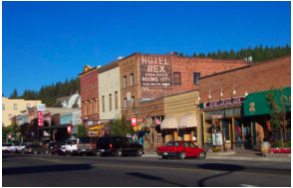
An important test of the success of General Plans is how they are used in making both long-term and day-to-day decisions, not only related to land use issues and development projects, but also to weighing expenditures and prioritizing capital projects. Truckee’s first General Plan provided the framework for a full range of planning work following the incorporation of the Town in 1993. This included a downtown specific plan, development code, trails and bikeways plan, redevelopment plan, river revitalization strategy and economic development strategy. These plans were completed before the 2006 update was initiated.
There was a strong desire for the General Plan update to be equally meaningful but to reflect the relative maturity of the Town. The update honored this desire by becoming more specific and more directive in terms of action items designed to achieve plan goals and objectives. The 2025 General Plan Implementation Program was prepared and adopted to provide key direction on how the General Plan is to be utilized. In recognition of the fact that General Plan implementation is a dynamic process affected by a variety of inputs, such as the economy, the Implementation Program was adopted by Town Council resolution but is not formally part of the General Plan. The implementation program provides specific guidance about how General Plan policies will be handled through the Town budget process, in the capital improvement program and through the preparation of future policy and regulatory documents and programs. A simple but effective table is provided by Table 1, which identifies each General Plan action item, the responsible Town Department or individual, the decision making or action person or body and the relative priority. This table is analyzed annually through the mandated annual planning report and provides clear accountability.
Some of the significant successes from the General Plan over the last 3 years include focusing on community character issues include:
-
Established a stronger focus on maintaining Downtown Truckee as the pre-eminent Town Center, reinforcing its successful nomination as a National Register Historic District. Additionally, the Plan made possible recent approval of the Railyard Master Plan, a redevelopment project of several hundred housing units in a mixed-use extension of the existing downtown. This future neighborhood provides the opportunity to address Community Character policies geared to bringing the “locals” back downtown.
-
Provided the policy support for development standards that prohibit corporate and franchise architecture, which is inconsistent with Truckee's character, and instigated a recently adopted ordinance that prohibits office uses on the ground floor along Commercial Row in Downtown Truckee.
-
Advocated an effort to develop a pocket park and interpretative display in downtown Truckee adjacent to Trout Creek.
-
Provided a stronger policy basis for the successful use of Transfer of Development Rights (TDR) to move development potential away from an identified scenic vista and into an adjacent developed area.
-
Connecting the network of open spaces through an aggressive trail program through direct efforts of the Town and collaborative efforts with local non-profit organizations.
-
Bolstered the policy framework that protects important scenic resources such as the Historical District, Donner Lake and the Truckee River, which is important as Truckee updates its development code and struggles with a very difficult economic time.
-
Supported the use of redevelopment resources to partner in Truckee Thursdays and other downtown events designed to attract both locals and visitors downtown in the summer season.
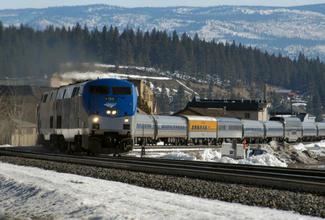
During the three years of the plan's development, Truckee experienced several of the challenges that can derail a general planning process, but fortunately was able to handle these with little disruption. First, during the update process, the Town Planning Director was promoted to City Manager. This stretched his ability to focus on the General Plan, and was one reason that the Plan took about one year longer to complete than was originally envisioned. To help avoid these types of issues, when communities set up a timeline for a Plan, they should consult with key city staff to make sure that everyone is prepared for the proposed schedule. Changes to personnel can cause significant interruption to the Plan process, and risk losing momentum and consensus that already been built.
Another challenge developed from the fact that the Town opted not to have a Stakeholder Committee, and used the Planning Commission to guide public input in Phase Two (see “Creating Trust and Efficiency,” above). This led to some frustration and attempts and threats to derail the process on the part of some stakeholders. With shared vision and political will on the part of both the Town Council and staff, planners were able to hold firm to the results of the Phase One process, allowing the public to remain involved, without having to undergo the time, expense, and controversy that can occur with a Stakeholder Committee.
Many communities' planning processes can be disrupted by changes resulting from local elections. Toward the end of the plan process, a local election resulted in a change of the majority of the Town Council. Fortunately, however, the years of consensus building, outreach, and transparency in the process meant that the Plan was not a major campaign issue, and the new Council immediately approved the Plan.
Community Description
The Town of Truckee contains 34 square miles, and has a permanent population of 16,000; half of its 12,000 housing units are vacation homes. Truckee was until recently a rapidly growing community and can best be described as an historic mountain town surrounded by more contemporary suburban development.
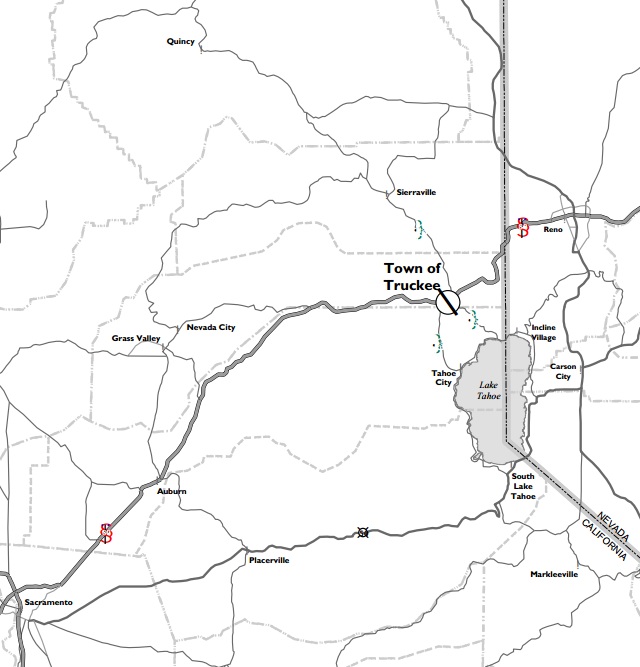
Timeframe of Plan Development
The General Plan Update was initiated in 2003 and adopted in November 2006. It was a two phase process: Phase 1 creating the Scope for the update and Phase 2, the update process.
Keeping on Track
The process took 3 years instead of the anticipated 2 years primarily because of staff changes, specifically a reshuffling of city development and planning staff and the promotion of the planning director to City Manager.
Overall Vision of the Plan
Before incorporation, with its isolated subdivisions and lack of a central focus, Truckee had been a town that only a county could create. The Plan's primary aim was to define what was essential to the character of the town, and to demonstrate how Truckee could actually be improved through managed growth.
Other City/County Department's Involvements
Within the city, the Engineering and Public Works departments were key partners, especially with determining traffic impacts.
Truckee is a community of special districts—the town does not provide sewer, fire, or water, and does not control any significant infrastructure except roads. This made the plan process more complicated. CalTrans also worked with the Town on highway issues, as two major highways pass through Truckee.
Legal and Policy Context
The Town had to adopt a Housing Element early due to issues with affordable housing; other than this, its legal context was typical.
Consideration of Regional Issues
Before beginning the Plan Update, the Town had experienced some conflict with Placer County over development just south of the county line, which comes right up to the town limits. Resort and residential development in Placer County has major traffic and housing impacts on Truckee, through which almost all traffic to these areas must pass. The Placer County government is based in Roseville, on the other side of the mountains, and there was a concern that because of their distance, the County would not have a immediate understanding of issues in the Tahoe area. The Truckee General Plan contains guidelines for how the Town should weigh in on projects in Placer County.
Adaptability
Due to the recession, the timing of growth projections have changed since the Plan's adoption. Measures in the plan's implementation allow for adjustments to these processes and figures, and the economic disruptions have not seriously affected the Plan's legitimacy.
Organization
Other than its optional elements, discussed above, the Plan follows a fairly standard organization.
Costs
The consultant cost of the effort was $1 million, including the EIR. In-house costs were roughly 1.2 FTE for the entire three-year plan process.
Actual Costs vs. Expected Costs
Following the Phase One process, costs remained very close to what had been budgeted.
CEQA Review
The EIR was completed by the same consultants who had driven most of the General Plan, and did not face any significant challenges.
Legal Challenges
None.
Planning Staff and Consultants
The General Plan was created in a collaborative effort with the Town of Truckee staff and Design, Community and Environment who was the lead consultant. Sub-consultants included Bay Area Economics (economic/housing), LSA Associates (biological), LSC Transportation Consultants (traffic), Illingworth and Rodkin (noise) and Darin Dinsmore (design). Despite the excellent contribution of the consultants, it was important for the community to know that city staff were involved with the Plan on a day-to-day basis
The Truckee Community Development Department consists of 6 full time planners. Major contributors to the General Plan effort included Tony Lashbrook, Community Development Director/Town Manager; John McLaughlin, Community Development Director and Duane Hall, Town Planner. Town Engineer Dan Wilkins was also actively involved in the General Plan process.
Accessing the Plan
The Truckee General Plan is available online at http://www.townoftruckee.com/index.aspx?page=470.
Name of CPR Preparer(s) of this Model
Tony Lashbrook
Name of Primary Point(s) of Contact at the Jurisdiction
Tony Lashbrook
Date Reviewed by Jurisdiction
April 28, 2010
CPR Peer Reviewers
David Booher, Linda Dalton, Al Zelinka
CPR Project Team
Elaine Costello, Project Manager; Co-Chairs Cathy Creswell and Janet Ruggiero; Craig Beebe, Project Assistant
Created with support from the American Planning Association, California Chapter.
The Catalog
Our catalog contains a number of General Plan "Great Model" examples. Browse the entire catalog
Browse by Principle
- Create a Vision
- Manage Change
- Make Life Better
- Build Community Identity
- Promote Social Equity and Economic Prosperity
- Steward and Enhance the Environment
- Engage the Whole Community
- Look Beyond Local Boundaries
- Prioritize Action
- Be Universally Attainable
Browse by tag:
awards city climate-change context county equity graphics growth-management health implementation infill mature-community organization participation preservation redevelopment region rural smart-growth suburban sustainability town urban urban-design web-strategies
